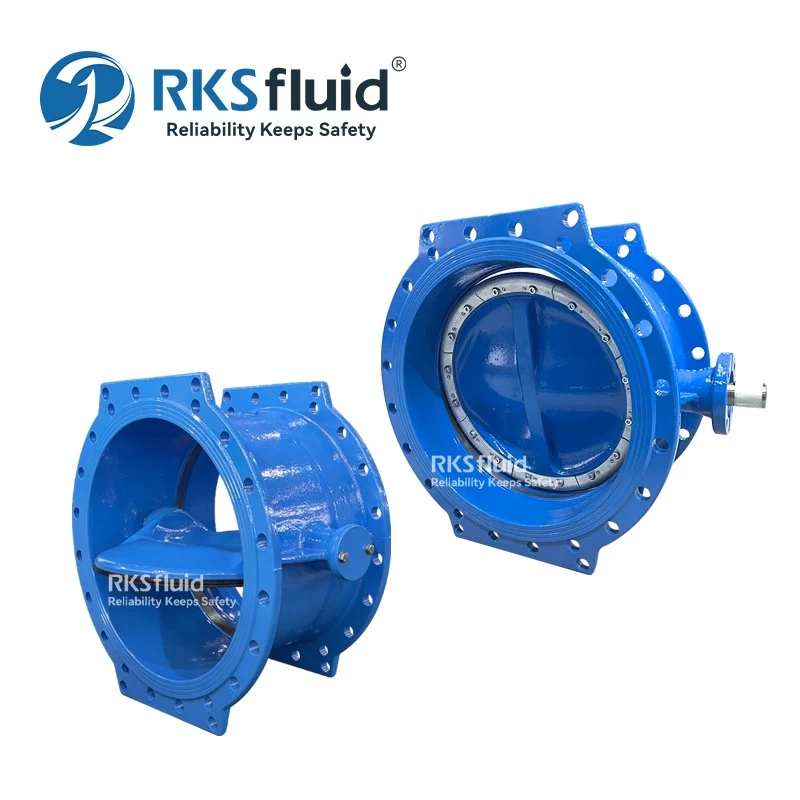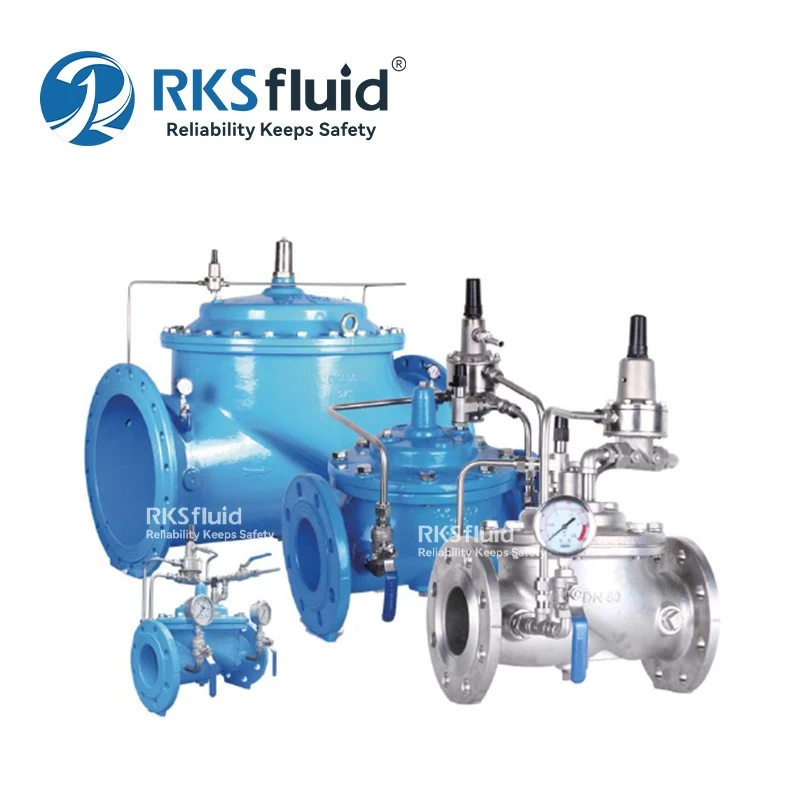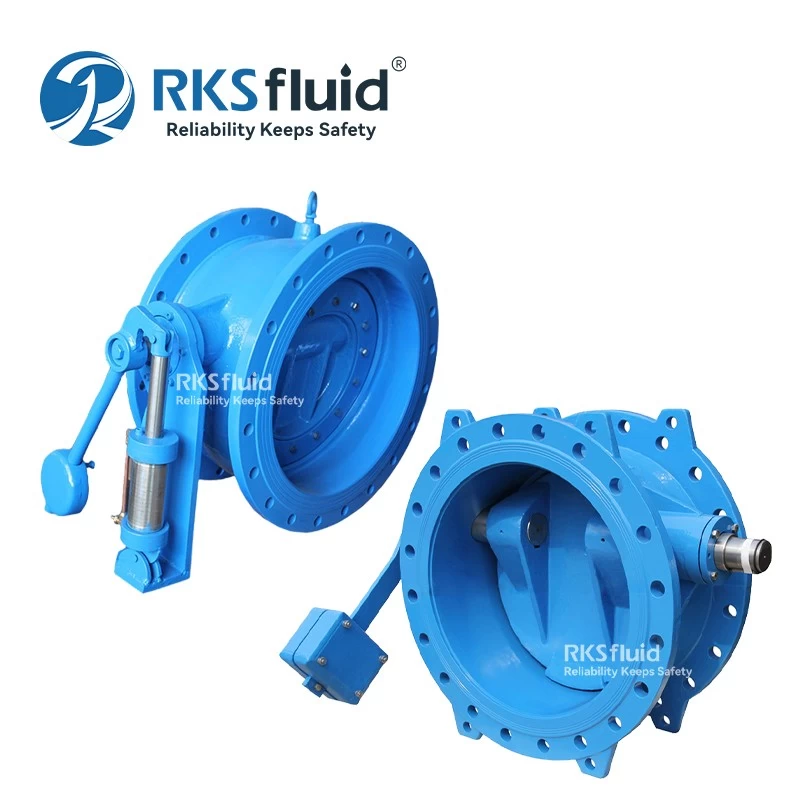- Main Product
- Contact Us
-
RKSfluid Flow Control Company
Web: www.rksfluid.com
Tel: +86 24 2318 0188
Fax: +86 24 2318 0788
Mail: info@rksfluid.com Contact Now
- Subscribe
-
Get email updates on new products
News
Application of butterfly valve and gate valve in different working conditions
RKSfluid
2022-06-10 16:58:57
Gate valves and butterfly valves are used for switching and regulating flow in pipelines,Of course, there are also methods in the selection of butterfly valves and gate valves.
In the water supply network, in order to reduce the buried depth of the pipeline, the butterfly valve is generally used for the pipeline with a larger diameter, and the gate valve is used for the pipeline that has little effect on the buried depth.
As for the demarcation line of the caliber, each place should be considered on a case-by-case basis.Judging from the use of the past ten years, the failure rate of butterfly valves is higher than that of gate valves. It is worth paying attention to expanding the application scope of gate valves when conditions permit.
Compared with the traditional wedge or parallel double gate valve, the soft sealing gate valve has the following characteristics:
The valve body and bonnet of the soft-sealed gate valve are cast by the precision casting method, which is formed in one time, and basically does not need mechanical processing, and does not use the sealing copper ring, saving non-ferrous metals.
There is no pit and no slag at the bottom of the soft-sealed gate valve, and the failure rate of gate valve opening and closing is low.
The soft rubber lined valve plate has uniform size and strong interchangeability.
Therefore, the soft sealing gate valve will be a form that the water supply industry is willing to adopt;
What is the difference between butterfly valve and gate valve?
According to the function and purpose of gate valve and butterfly valve, gate valve has small flow resistance and good sealing performance. Since the flow direction of the valve plate of the gate valve and the medium is vertical, if the gate valve is not properly opened and closed, the scouring of the valve plate by the medium will cause the valve plate to vibrate, which may easily lead to damage to the seal of the gate valve.
Butterfly valve is a kind of regulating valve with simple structure. Butterfly valve can be used for opening and closing control of low-pressure pipeline medium. The valve can be used to control the flow of various types of fluids, such as air, water, steam, various corrosive media, mud, oil, liquid metal and radioactive media. It mainly plays the role of cutting and throttling the pipeline. The butterfly valve opening and closing part is a disc-shaped butterfly plate, which rotates around its own axis in the valve body to achieve the purpose of opening and closing or adjustment.
Butterfly valves are driven by a valve stem. If you turn to 90°, you can open and close once. Changing the deflection angle of the disc can control the flow of the medium.
Operating conditions and media: butterfly valves are suitable for conveying various corrosive and non-corrosive fluid media in engineering systems such as producer, coal gas, natural gas, liquefied petroleum gas, city gas, hot and cold air, chemical smelting, power generation and environmental protection, building water supply and drainage, etc. 's pipeline. Used to regulate and cut off the flow of media.
A gate valve is a gate with an opening and closing part. The movement direction of the gate is perpendicular to the fluid direction, the gate valve can only be fully opened and fully closed, generally 5, and 2° 52' when the medium temperature is not high, depending on the gate parameters. Improve its manufacturability and make up for the deviation of the angle of the sealing surface during processing. Such gates are called elastic gates.
When the gate valve is closed, the sealing surface can only be sealed by the medium pressure, that is, the sealing surface of the gate valve is only pressed to the valve seat on the other side by the medium pressure to ensure the sealing of the sealing surface, which is self-sealing. Most gate valves are forced to seal, that is, when the valve is closed, the gate must be pressed against the valve seat by external force to ensure the tightness of the sealing surface.
Movement mode: The gate of the gate valve moves linearly with the valve stem, also known as the rising stem gate valve. Usually, there are trapezoidal threads on the lift rod, and the rotary motion is converted into linear motion through the nut on the top of the valve and the guide groove on the valve body, that is, the operating torque is converted into operating thrust. When the valve is open, when the lift height of the gate is equal to 1:1 times the diameter of the valve, the fluid passage is completely open, but this position cannot be monitored during operation. In practice, the apex of the valve stem is used as a symbol, the position where the valve stem cannot be opened, as its fully open position. In order to consider the locking phenomenon caused by temperature changes, it is generally at the top position, and then back to 1/2-1 turn as the valve fully open position. Therefore, the fully open position of the valve is determined by the position (ie stroke) of the gate. Some gate valves have a stem nut on the gate, and the rotation of the handwheel drives the stem to rotate and lift the gate. Such valves are called rotary stem gate valves or dark stem gate valves.
In the water supply network, in order to reduce the buried depth of the pipeline, the butterfly valve is generally used for the pipeline with a larger diameter, and the gate valve is used for the pipeline that has little effect on the buried depth.
As for the demarcation line of the caliber, each place should be considered on a case-by-case basis.Judging from the use of the past ten years, the failure rate of butterfly valves is higher than that of gate valves. It is worth paying attention to expanding the application scope of gate valves when conditions permit.
Compared with the traditional wedge or parallel double gate valve, the soft sealing gate valve has the following characteristics:
The valve body and bonnet of the soft-sealed gate valve are cast by the precision casting method, which is formed in one time, and basically does not need mechanical processing, and does not use the sealing copper ring, saving non-ferrous metals.
There is no pit and no slag at the bottom of the soft-sealed gate valve, and the failure rate of gate valve opening and closing is low.
The soft rubber lined valve plate has uniform size and strong interchangeability.
Therefore, the soft sealing gate valve will be a form that the water supply industry is willing to adopt;
What is the difference between butterfly valve and gate valve?
According to the function and purpose of gate valve and butterfly valve, gate valve has small flow resistance and good sealing performance. Since the flow direction of the valve plate of the gate valve and the medium is vertical, if the gate valve is not properly opened and closed, the scouring of the valve plate by the medium will cause the valve plate to vibrate, which may easily lead to damage to the seal of the gate valve.
Butterfly valve is a kind of regulating valve with simple structure. Butterfly valve can be used for opening and closing control of low-pressure pipeline medium. The valve can be used to control the flow of various types of fluids, such as air, water, steam, various corrosive media, mud, oil, liquid metal and radioactive media. It mainly plays the role of cutting and throttling the pipeline. The butterfly valve opening and closing part is a disc-shaped butterfly plate, which rotates around its own axis in the valve body to achieve the purpose of opening and closing or adjustment.
Butterfly valves are driven by a valve stem. If you turn to 90°, you can open and close once. Changing the deflection angle of the disc can control the flow of the medium.
Operating conditions and media: butterfly valves are suitable for conveying various corrosive and non-corrosive fluid media in engineering systems such as producer, coal gas, natural gas, liquefied petroleum gas, city gas, hot and cold air, chemical smelting, power generation and environmental protection, building water supply and drainage, etc. 's pipeline. Used to regulate and cut off the flow of media.
A gate valve is a gate with an opening and closing part. The movement direction of the gate is perpendicular to the fluid direction, the gate valve can only be fully opened and fully closed, generally 5, and 2° 52' when the medium temperature is not high, depending on the gate parameters. Improve its manufacturability and make up for the deviation of the angle of the sealing surface during processing. Such gates are called elastic gates.
When the gate valve is closed, the sealing surface can only be sealed by the medium pressure, that is, the sealing surface of the gate valve is only pressed to the valve seat on the other side by the medium pressure to ensure the sealing of the sealing surface, which is self-sealing. Most gate valves are forced to seal, that is, when the valve is closed, the gate must be pressed against the valve seat by external force to ensure the tightness of the sealing surface.
Movement mode: The gate of the gate valve moves linearly with the valve stem, also known as the rising stem gate valve. Usually, there are trapezoidal threads on the lift rod, and the rotary motion is converted into linear motion through the nut on the top of the valve and the guide groove on the valve body, that is, the operating torque is converted into operating thrust. When the valve is open, when the lift height of the gate is equal to 1:1 times the diameter of the valve, the fluid passage is completely open, but this position cannot be monitored during operation. In practice, the apex of the valve stem is used as a symbol, the position where the valve stem cannot be opened, as its fully open position. In order to consider the locking phenomenon caused by temperature changes, it is generally at the top position, and then back to 1/2-1 turn as the valve fully open position. Therefore, the fully open position of the valve is determined by the position (ie stroke) of the gate. Some gate valves have a stem nut on the gate, and the rotation of the handwheel drives the stem to rotate and lift the gate. Such valves are called rotary stem gate valves or dark stem gate valves.











